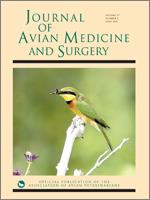Over a 2-month period, individual birds belonging to species in multiple avian families, including Bucerotidae, Sturnidae, Columbidae, Corvidae, and Anatidae, were presented to the Animal Care Center at the Phoenix Zoo for emergency medical care. Common clinical findings were subdued behavior, weight loss, and an inability to fly. Biochemical abnormalities commonly included high calcium and uric acid concentrations and high to high-normal phosphorus concentrations. In cases in which necropsies were done, mineralization of organs often was present, frequently of the kidneys and cardiovascular system. Because of the high calcium and phosphorus concentrations, mineralization of tissues, cases representing multiple avian species, and the recent addition of rodent bait boxes containing cholecalciferol to the zoo's pest control program, a presumptive diagnosis of cholecalciferol toxicosis was made. Treatment most commonly consisted of daily fluid diuresis. These cases demonstrate that, although cholecalciferol is considered unlikely to cause relay toxicosis, primary toxicosis still should be considered in cases with sudden onset of nonspecific signs when exposure to cholecalciferol was possible.
How to translate text using browser tools
1 June 2013
Suspected Cholecalciferol Rodenticide Toxicosis in Avian Species at a Zoological Institution
Julie Swenson,
Gregory A. Bradley
ACCESS THE FULL ARTICLE
Avian
calcium–phosphorus solubility index
cholecalciferol
hypercalcemia
rodenticide
soft-tissue mineralization
vitamin D





